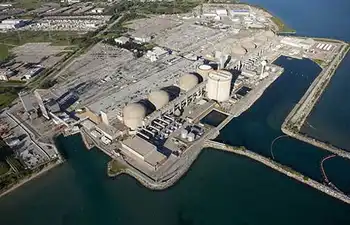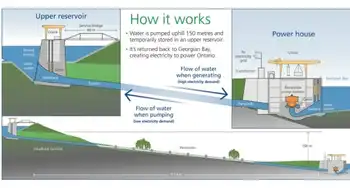Windpower industry eyes government mandate for growth
Investment in new wind power capacity that exploded from $3 billion in 2005 to $17 billion in 2008 was projected to fall to $13 billion this year. The fallout for the U.S. industry, the world's largest producer of wind power at 28,000 megawatts, could usher in a period of consolidation, analysts said.
Financial institutions no longer provide credit to wind farms based on the tax incentives and projected electricity revenues, and natural gas prices have tumbled from $12 per million BTU to under $4.
The industry is now counting on a government bailout of a different sort — legislation that would mandate that 25 percent of the country's electricity be generated from renewable sources by 2025, up from around 7 percent now, with wind making up 1.5 percent.
"To get to the levels of energy that we're talking about, we have to produce a wind turbine every 15 minutes for the next 20 years," Vic Abate of General Electric Co, the largest U.S. wind turbine supplier, said in an interview on the sidelines of an industry conference.
GE had $6.7 billion in wind-related sales last year. The company has built and installed 12,000 wind turbines, which can cost $3 million each and provide power to up to 1,700 homes.
Some 20,000 attendees at the Windpower 2009 conference were exhorted by industry leaders and U.S. Interior Secretary Ken Salazar to lobby for congressional passage of legislation to create a national renewable energy standard.
"A renewable energy standard I think is very important to drive growth," Salazar told reporters after his address to the conference. "We have a new beginning here. The new beginning is to look at the broad energy portfolio."
Twenty-eight states have enacted standards requiring an escalating percentage of power generation come from "green" sources such as wind, solar, hydropower and biomass.
Supporters of a national standard say it would provide a target and boost demand for the "credits" wind farms and other renewable projects create, lifting revenues for the hard-pressed industry.
U.S. grants to wind power projects anticipated from the recently passed stimulus bill will help some, industry members said. But the industry's problems may persist for a while, which Abate attributed to growing pains.
The biggest hurdle for the moment is the depressed price of competing natural gas, which in effect sets the price of electricity for wind power producers.
"The price of natural gas at $4 (per million BTU) is the single biggest threat the wind industry faces. The bright side is that many industry analysts don't expect gas prices to stay at $4 once the global economy begins to recover," said Joshua Magee of market research firm Emerging Energy Research in Cambridge, Massachusetts.
Magee's firm predicted a rebound in wind power growth in 2010, with an estimated 9,000 megawatts of capacity added through $18 billion in investments. The firm predicted 15,500 megawatts of capacity would be added in 2020.
Magee said the increasingly crowded field of wind turbine manufacturers, many from Europe, along with a drop in prices of steel and other raw materials, will lower the prices of wind power turbines by 10 percent or more in the next two years. But it may also create a climate for industry consolidation.
"If you have cash there are a lot of distressed assets that are looking for buyers," Magee said.
The U.S. renewable standard, a twist on long-standing efforts in Denmark and other European nations to mandate a "greener" energy mix, may rub some free-market advocates the wrong way. Denmark gets 20 percent of its power from wind.
"I heard those arguments in Nevada when I worked to put in the (state's) renewable portfolio standard. Now they love the fact they have it," said Jon Wellinghoff of the Federal Energy Regulatory Commission. "What it's done is provided for rural economic development and diversification."
Jose Donoso, of Spain's Gamesa, a leading wind turbine manufacturer, said the U.S. approach still leaves uncertainty for wind farm investors.
Spain has set a firm target of 45,000 megawatts of wind power by 2020, more than double its target for next year.
"The key is stability. This gives more security. With a percentage it depends on consumption. If consumption falls, the level will be less. With Spain's system, it's clear for the investors. With a percentage, it's less clear," Donoso said.
Related News

EPA Policy to limit telework emerges during pandemic
WASHINGTON - EPA has moved forward on a new policy that would restrict telework even as agency leadership has encouraged staff to work from home during the coronavirus outbreak.
The new EPA order obtained by E&E News would require employees to report to the office at least three days every week.
"Full-time employees are expected to report to the official worksite and duty station a minimum of three (3) days per week," says the order, dated as approved on Feb. 27. It went into effect March 15 — that night, EPA Administrator Andrew Wheeler authorized telework for the entire agency due to…




